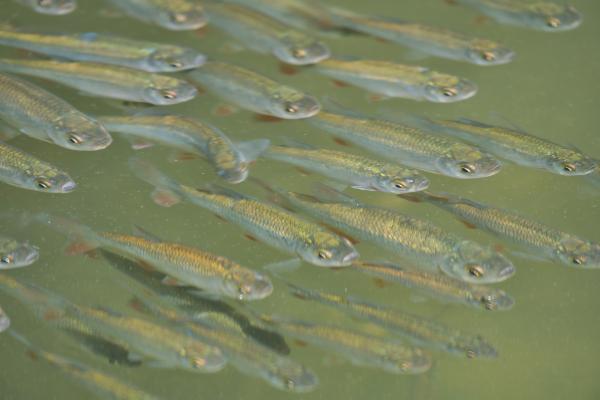How best to maintain diversity and aid imperiled fish species?
In the presence of declining fish populations, we can either simply replace the losses with fish from hatcheries, or we can alter their environment to support those already in place by relieving population bottlenecks like food shortages or protection from predators. A study in Science put those two approaches to the test.
The researchers conducted a series of experiments in 20 gravel pit lakes involving 160,000 fish captured over six years before and after implementing three “management interventions.”
- Fish stocking
- Habitat enhanced using coarse wood bundles placed within the lakes
- Habitat enhancement by creating shallow zones along the banks of the lakes that provide “valuable spawning and nursery habitats and constitute foraging areas … contributing to fish recruitment and productivity.”
The different management methods are displayed horizontally, and various means of determining fish abundance, the CPU or catch per unit effort, are shown vertically. [1] Simply restocking fish had the worst outcome. Enhancing the environment with those shallow zones led to nearly three-fold more fish than control lakes (with no alterations or stocking). The increases in fish population were particularly significant for juvenile fish – enhancing the environment allowed fish populations to thrive. Improving the environment with the haphazard placement of wood to provide shelter was helpful for some species, but overall, no more effective than restocking the fish.
With a moment of reflection, these findings make sense. In lakes close to their capacity to provide for the fish populations, adding more fish only results in more competition for survival. Alternatively, creating an environment that fosters the ability to spawn, adequately forage and have protection enhances the fish population. Haphazardly providing the raw materials for an environmental structure (the addition of wood) does not create a flourishing population by itself.
“Our large-scale replicated study design that created 120 lake-years of observations revealed that ecosystem-based habitat management strongly outperforms the traditional, single-species–focused practice of fish stocking and single-structure–oriented management to support fisheries.”
Are there any lessons for humans?
No matter where you fall on the political spectrum, there is no doubt that people are migrating from poor economic, political, or climactic circumstances. To employ a metaphor, we are restocking populations with migrants. Oddly enough, I am not the first to apply a fishing metaphor to migration – how else can you explain “catch and release.”
Leave aside the who, how, and how many “should” migrate; there are too many political landmines and ethical dilemmas in that discussion for the Internet. Migration is real, and it will continue. Could it be that by simply “restocking,” the migrants fail to thrive? It seems to be the case. If we think of our cities and towns as those resupplied lakes, aren’t the concerns of the Governors and the Mayors, on both sides of the aisle, regarding housing, education, and employment a signal we should heed?
The metaphor does break down. Migrants do not, in general, die out. Instead, they move into what Tibetan Buddhism describes as a bardo, like Christian purgatory, a land between death and rebirth. Could our current approach of providing housing, meals, and little else be likened to the wood placement in those lakes, allowing some, often the more predatory, to survive while others find the additional hurdles of language and an “undocumented” status make them prey?
The eco habitat of the shallows, when built into lakes, provided those fish with a safe environment (community) in which to thrive which ultimately meant they successfully assimilated into the lake's ecosystem. Could providing an environment like the shallow zones that foster the successful survival of nature’s creatures be a better solution?
Discuss among yourselves.
[1] CPUEE = electrofishing, CPUEN = net fishing
Source: Think adding more fish to a lake makes for better fishing? Think again. Anthropocene Magazine
Ecosystem-based management outperforms species-focused stocking for enhancing fish populations Science DOI: 10.1126/science.adf0895





